
Recognizing Plant Cell first authors: James K. McCarthy
Blog, Research, Research Blog, The Plant Cell: Author ProfilesJames K. McCarthy, featured first author of Nitrate Reductase Knockout Uncouples Nitrate Transport from Nitrate Assimilation and Drives Repartitioning of Carbon Flux in a Model Pennate Diatom
Current Position: Research Fellow, J. Craig Venter Institute, La Jolla, CA.
Education: Ph. D. Microbiology…
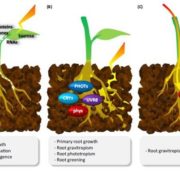
Review: Multiple routes of light signaling during root photomorphogenesis
Blog, Plant Science Research Weekly, Research, Research BlogLight response research in plants has traditionally focused on the shoot, but recent studies have revealed that roots are also light responsive. Lee et al. address the why and how of root photomorphogenesis. They review three ways that light is perceived in roots: via mobile signals from the shoot, direct…

Review: Transcriptional control of photosynthetic capacity - conservation and divergence from Arabidopsis to rice
Blog, Plant Science Research Weekly, Research, Research BlogAbout 3000 genes are required for a plant to carry out photosynthesis. Wang et al. review the transcriptional control of these photosynthetic genes, drawing on transcriptomic and evolutionary studies to make comparisons between Arabidopsis and grasses. Photosynthesis of course starts with light, and…
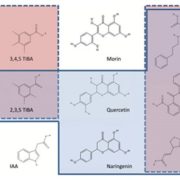
Review: Naphthylphthalamic acid and the mechanism of polar auxin transport ($)
Blog, Plant Science Research Weekly, Research, Research BlogTeale and Palme give an overview of what the last 60 years of using synthetic chemicals inhibitors of polar auxin transport has really taught us. Key among inhibitors is Naphthylphthalamic acid (NPA) that interferes with polar auxin transport and can mimic PIN gene mutant phenotypes. These inhibitors…
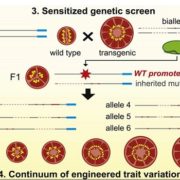
Engineering quantitative trait variation for crop improvement by genome editing ($)
Blog, Plant Science Research Weekly, Research, Research BlogVariation is the engine of evolution, and plant breeders and geneticists have long relied on induced variation to create a population from which to select. Rodríguez-Leal et al. used CRISPR/Cas9 mutagenesis to selectively introduce variability into the promoter regions of three genes involved in tomato…
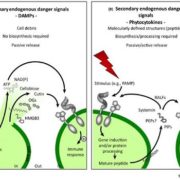
Review: Sensing danger – key to activating plant immunity
Blog, Plant Science Research Weekly, Research, Research BlogThe first step in defending yourself is recognizing that you need to defend yourself. Gust et al. review the mechanisms through which plants sense danger, drawing parallels to similar mechanisms in animals. They define three categories of danger signals. Exogenous signals are “non-self” signals,…
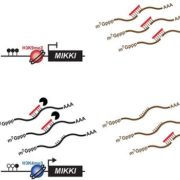
Regulation of rice root development by a retrotransposon acting as a microRNA sponge
Blog, Plant Science Research Weekly, Research, Research BlogTransposable elements (TEs) compose a considerable portion of most plant genomes, and mounting evidence shows various roles of TEs in the regulation of gene expression. Some TE transcripts have been hypothesized to work as “sponges” to help fine-tune the levels of miRNAs through complementary binding.…

The G-box transcriptional regulatory code in Arabidopsis
Blog, Plant Science Research Weekly, Research, Research BlogThe G-box (CACGTG) is a DNA element widespread in plant genomes and recognized by two large families of transcription factors (TFs), the basic leucine zipper family (bZIP) and the basic-helix-loop-helix (bHLH) family. Members of these TF families contribute to growth, temperature and light signaling,…

Completing the whole puzzle of whole genome duplications in land plants
Blog, Plant Science Research Weekly, Research, Research BlogA hot topic in plant evolutionary biology is whole genome duplications (WGDs), in which an organism copies its entire genetic dataset. Having double the required DNA is often viewed as detrimental but can be useful in times of rapid environmental change. Recently, the role of WGDs during plant evolution…

